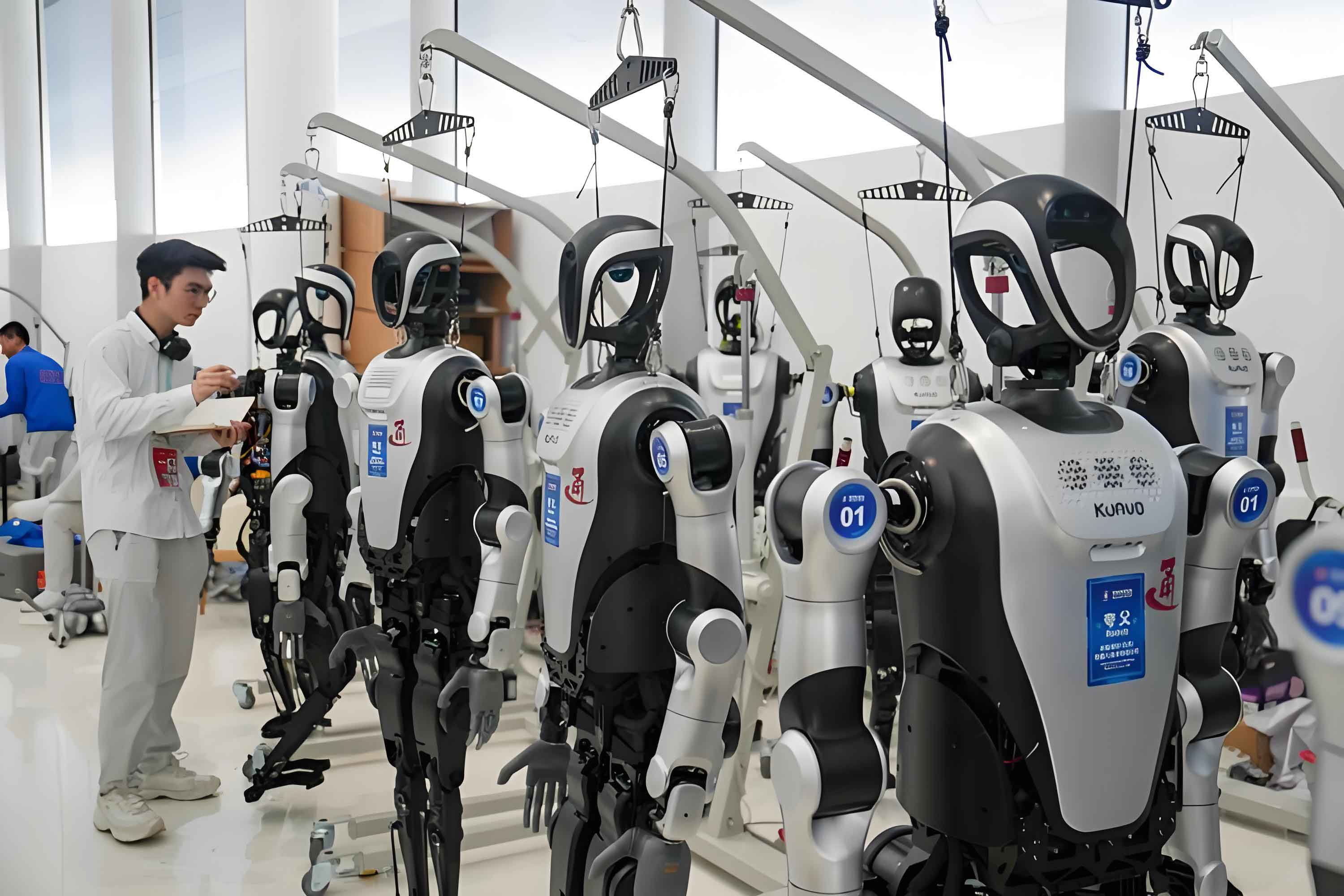
BEIJING, April 24, 2025 – In a groundbreaking event at Beijing’s Economic-Technological Development Area, humanoid robots competed alongside human athletes in the world’s first half marathon for bipedal machines on April 19. The TianGong humanoid robot claimed victory, completing the 21-kilometer course in 2 hours and 40 minutes – a milestone demonstrating unprecedented endurance and mobility for humanoid robot technology.
1. The Breakthrough Performance
Spectators cheered as the 1.8-meter TianGong and smaller models like “Whirlwind Kid” navigated turns with steady strides. “Though some needed assistance or stumbled, witnessing this sci-fi becoming reality is breathtaking,” commented spectator Xiao Tang, who attended with his child. Unlike humans for whom marathons are routine, this event represents a quantum leap for humanoid robot capabilities in open environments. The achievement required innovations in thermal management and joint cooling systems enabling sustained high-intensity operation – previously impossible for humanoid robot platforms.
2. The Sudden Market Explosion
Humanoid robot visibility surged after CCTV’s Spring Festival Gala performance, triggering massive capital inflow. Global humanoid robot investments exceeded $5 billion in early 2024, matching the previous five years combined. Leng Xiaokun, CEO of Leju Robotics, attributes this to embodied intelligence breakthroughs: “Humanoid robots are the ideal physical vessels for AI models to interact with our world.” The convergence of three elements drives progress:
- Brain: AI large language models enabling environmental perception and decision-making
- Cerebellum: Motion control algorithms managing balance and locomotion
- Body: Mechanical platforms executing complex movements
3. Historical Evolution of Humanoid Robots
Professor Zhang Weimin of Beijing Institute of Technology notes that AI advancements since 2022 have accelerated development beyond traditional programming limitations. Key historical milestones include:
| Year | Humanoid Robot | Breakthrough |
|---|---|---|
| 1973 | Waseda University’s WABOT-1 | First bipedal walking humanoid robot |
| 2000 | Honda’s ASIMO | Natural gait refinement |
| 2013 | Boston Dynamics’ Atlas | Advanced balance recovery after falls |
Chinese enterprises adopted integrated development approaches since the late 1980s. “Domestic humanoid robots now match international counterparts in basic functions like walking, jumping, and standing,” Zhang stated. The TianGong team optimized structural design and simulation training to withstand uneven terrain during the marathon – particularly challenging during turns where balance systems counteract centrifugal forces.
4. Technical Challenges and Progress
Stair climbing remains exceptionally difficult for humanoid robots. Most systems require pre-scanned 3D models and programmed steps – inadequate for unpredictable real-world variations. TianGong’s recent 100-step continuous climb demonstrated significant progress. “Soon, humanoid robots could operate in extreme environments like mountains or disaster zones,” said Wei Jiaxing of Beijing Humanoid Robot Innovation Center. Another critical component is the dexterous hand – the “crown jewel” of humanoid robot development. While human hands achieve 21 degrees of freedom, current robotic versions reach only 19 despite containing 12 motors and 741 components. “Coordinating multiple fingers to handle chopsticks or eggs requires immense computational power,” explained Zhou Chen of Zhejiang Lingqiao Intelligence Technology.
5. Industrial Applications Accelerate
Humanoid robots are already entering factories. At manufacturing sites, they perform tasks like bending, squatting, and transporting materials. Leng Xiaokun identifies three adoption phases: research/exhibition → industrial → household. Industrial applications show strongest immediate potential due to labor shortages. Humanoid robots offer flexibility advantages over traditional industrial arms in tasks like battery assembly. However, efficiency remains approximately 70% of skilled workers according to Leng. Current limitations include:
- Inability to perform precision tasks like screw fastening
- Restriction to repetitive heavy labor (welding, assembly)
- High unit costs averaging ¥700,000 ($100,000)
Policy tailwinds are strengthening. China’s MIIT issued humanoid robot development guidelines in November 2023, positioning the sector alongside strategic industries like EVs. Embodied intelligence entered the 2024 Government Work Report, triggering nationwide industrial chains development. Chen Zhi of Chinese Academy of Science and Technology for Development notes additional barriers: “Lack of standardized components and insufficient application-specific development hinder commercialization. The most critical bottleneck remains AI ‘brain’ development – China lacks high-quality datasets for training humanoid robot intelligence.”
6. The Path to Household Adoption
Demonstrations show humanoid robots massaging shoulders, tutoring children, and folding laundry – fueling public anticipation. Zhong Xinlong of China Electronics Information Industry Development Institute cautions: “Households present exponentially more complex environments than factories.” Challenges include:
- Navigating unpredictable elements (pets, toys, curtains)
- Interpreting ambiguous commands (“Put medicine where Mom can see”)
- Learning family-specific habits and preferences
Recent Chinese Academy of Sciences testing revealed only 58.3% task completion rate in simulated homes – 37% lower than factory performance. Zhong suggests gradual integration through collaborative models: “Start with simple chores like cleaning before advancing to complex caregiving.” Safety protocols and ethical frameworks also require development before widespread home deployment. Leng Xiaokun projects: “Practical industrial humanoid robot use may emerge in 3-5 years, but household ubiquity requires at least a decade.” Regulatory standards and cost reductions must parallel technical progress. As Wang Xingxing of Unitree Robotics summarizes: “Humanoid robot numbers will grow significantly this year. With maturing technology and falling costs, their entry into homes is accelerating.”
